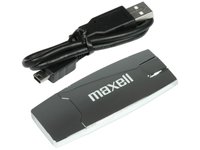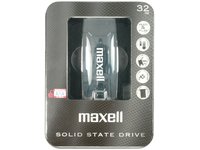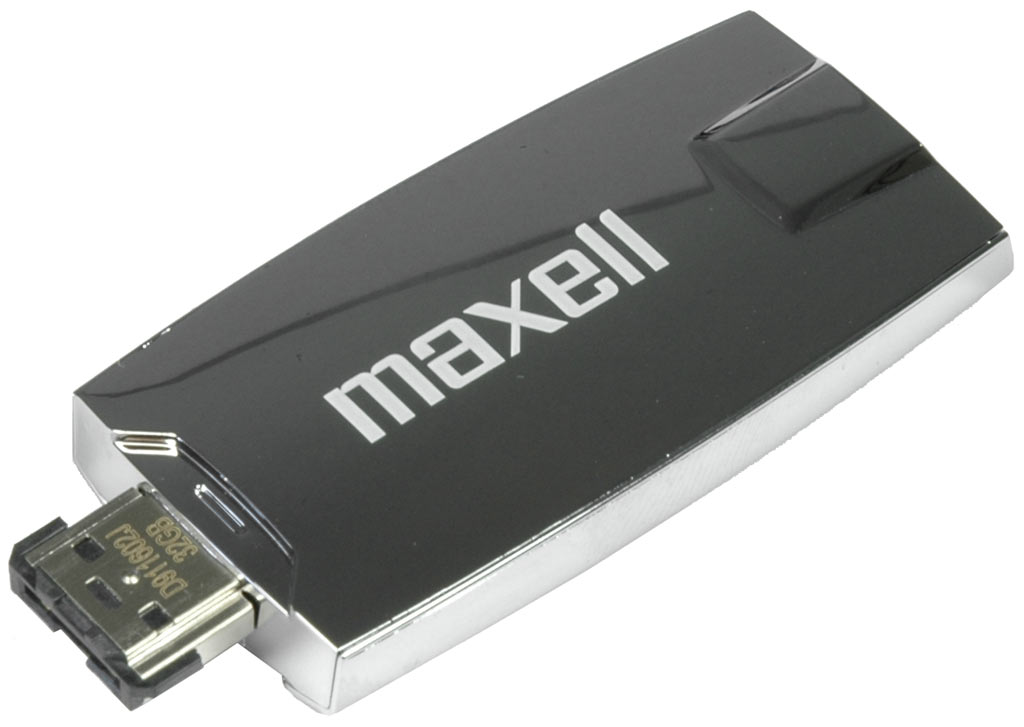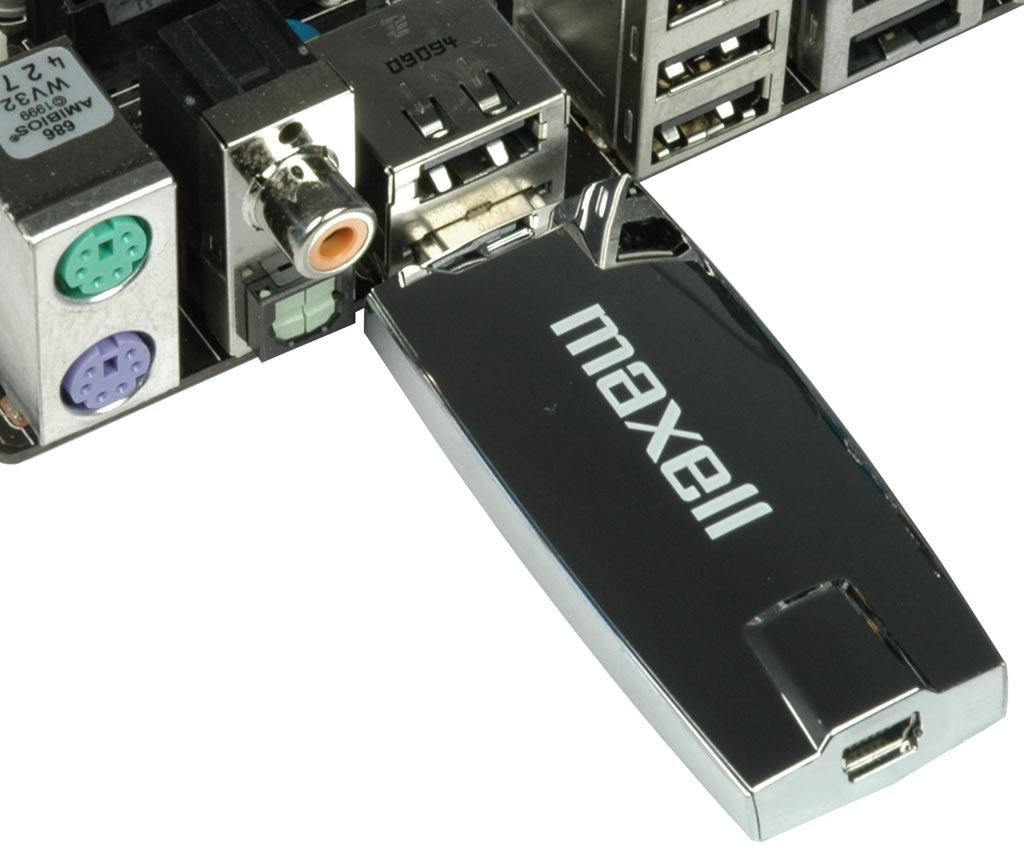Thumb Drives: Introducing 128 GB USB And High-Speed eSATA
32 GB, eSATA/USB: Maxell Solid State Drive
Maxell’s eSATA / USB 2.0 combo drive was announced as early as October 2008 and hit the European retail market at the start of 2009. The product is available in various markets today (Ed.: unfortunately, not the North American market, it seems). We took a look at the 32 GB capacity drive.
Like the two other eSATA-based products in this roundup, the Maxell thumb drive utilizes the JMB362 controller by JMicron and has the same chassis design, but is different inside. Read access times vary between 0.6 and 0.9 ms depending on the interface you choose (you can connect the drive via USB 2.0 using a USB 2.0 cable or eSATA by connecting it directly into any eSATA port).
As mentioned earlier in this article, you will have to connect the USB 2.0 cable in order to provide power to the drive, unless you have an eSATA port already powered by an additional, integrated USB 2.0 pinout. Some motherboards come with these ports, although this has never been officially specified.
The drive worked properly in both eSATA and USB 2.0 modes. eSATA provides a peak bandwidth of 52.7 MB/s, while USB 2.0 operation maxes out at 26.8 MB/s; the latter is still a nice result, though. Effective data transfer rates range from 48 to 51 MB/s for eSATA sequential reads, and 29 to 45 MB/s for sequential writes. Compared to USB 2.0 performance at 26 MB/s read and 20-26 MB/s write throughput, this is a significant performance increase.
Maxell positions the eSATA thumb drive being a “portable solution for your SSD needs,” which sounds about right to us. Effectively, the Maxell eSATA thumb drive performs like a 2-3 year old hard drive, and that performance level is still sufficient for many applications, such as working with project data off a mobile device. Unfortunately, poor availability in North America makes it more difficult to actually buy/use.


Get Tom's Hardware's best news and in-depth reviews, straight to your inbox.
Current page: 32 GB, eSATA/USB: Maxell Solid State Drive
Prev Page 128 GB And USB 2.0: Kingston Data Traveler 200 Next Page 8 GB, eSATA/USB: OCZ Throttle eSATA Flash Drive
